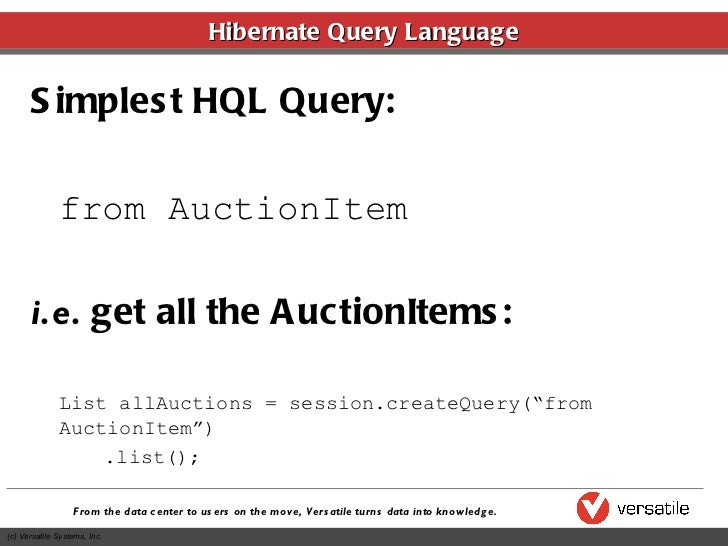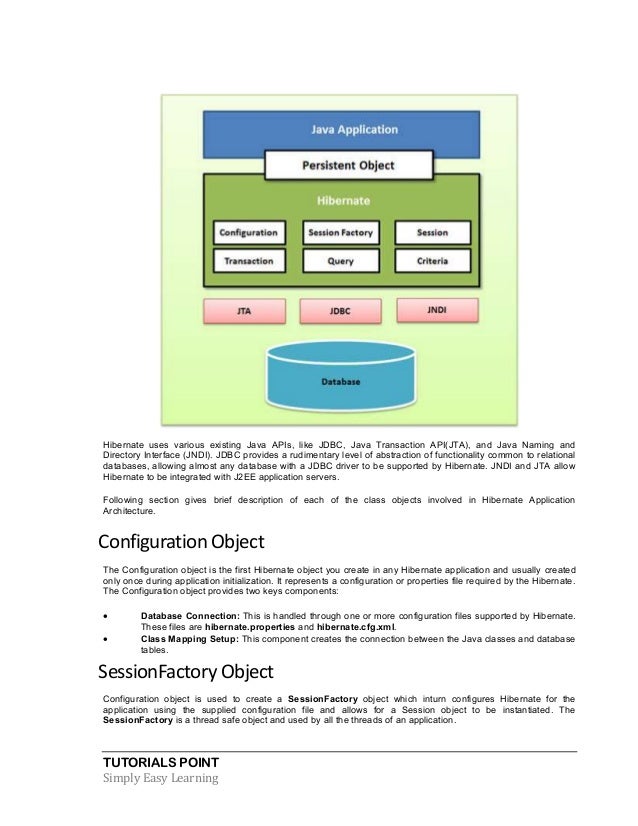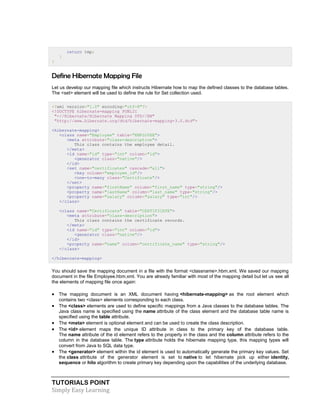


If you ever felt like you need more control over Hibernate’s internal configuration this new feature is something you can leverage to achieve this goal. (so H2 databases are out of the question). We have arrived at a state with Hibernate 4 where we can change the database behind the system to go for production usage Chapter 13: Connection Pooling with Hibernate 4
#Hibernate tutorial software
This approach is very common in Software as a Service (SaaS) solutions. Multi-tenancy indicates an approach in software development where a single application simultaneously serves multiple clients.

Chapter 12: Multi-Tenancy with Hibernate 4 an application where you need to take over. Most of the time it is OK to simply let the database do the work of concurrency control, however sometimes you can encounter. Chapter 11: Concurrency control with Hibernate 4 In this article, I will give you a brief introduction to Entity auditing with Hibernate, or to be more specific with Hibernate Envers which is since some 3.x version part of the Hibernate core. And I/O operations are much slower than operations using only the applications memory. Querying the database is always a performance impact because it is an I/O operation.

Caching is one way to do this because it enables fewer queries going to the database. If you have a bigger application you think about performance and how you can improve it. In this article, I will give you a brief introduction to Hibernate batch processing. Chapter 8: Batch Execution with Hibernate 4
#Hibernate tutorial how to
Here in this article I will show you how to switch to another database which actually persists the data and you can retrieve it later, and what you have to re-configure to make things work as you expect. Chapter 7: Hibernate 4 Database Configuration Chapter 6: Hibernate 4 with Query LanguageĪfter the introduction into Hibernate 4 which included mapping relationships and inheritance let’s dig a bit deeper and see how we can reach stored data in the database. The same can be achieved with Hibernate too: you can group common functionality to a parent class and add only the differences to the children - and you can map this relation to the database too.
From MavenChapter 5: Entity Inheritance Models in Hibernate 4Īs you already know, objects can inherit from each other to move common functionality into a superclass and have only the different parts in the children. To use Hibernate ORM in your own project you just need to name a dependency on it in your project. Now I will dig deeper and show how you can createĮntity relations and map them to the database. In the previous article we introduced annotations instead of XML configuration. Chapter 4: Entity Relations with Hibernate 4 In this article, I will introduce the annotation-based configuration, where you can use Hibernate’s annotations on the entities Chapter 3: Hibernate 4 Annotation Configuration In this article, I will show you how can you use Hibernate 4, along with a simple example application available to try out Hibernate solves object-relational impedance mismatch problems by replacing direct persistence-related database accesses with high-level object handling functions. Let's create the simple Persistent class: Employee.Hibernate is an object-relational mapping (ORM) library for the Java language, providing a framework for mapping an object-oriented domain model to a traditional relational database. The application programmer will not be able to use proxies for lazy association fetching.


 0 kommentar(er)
0 kommentar(er)
